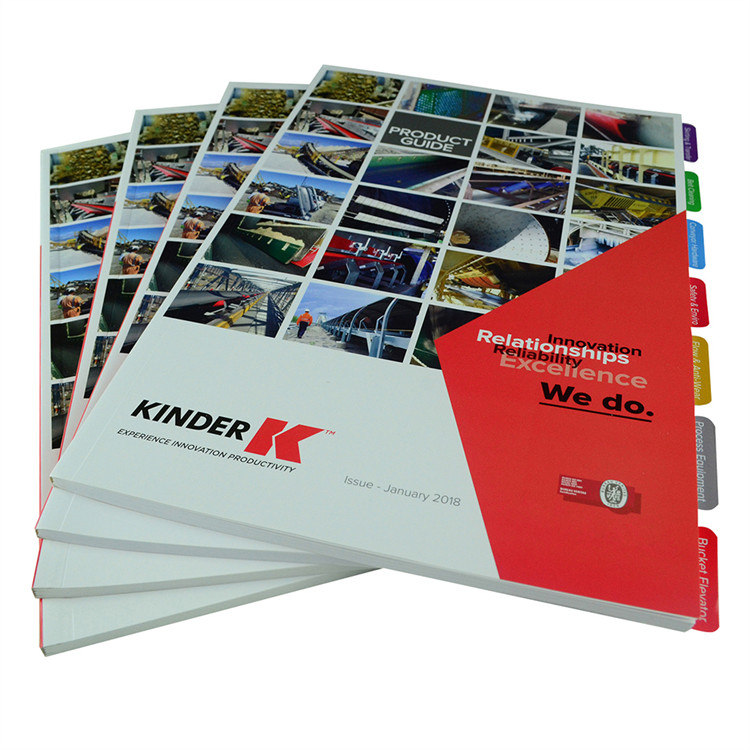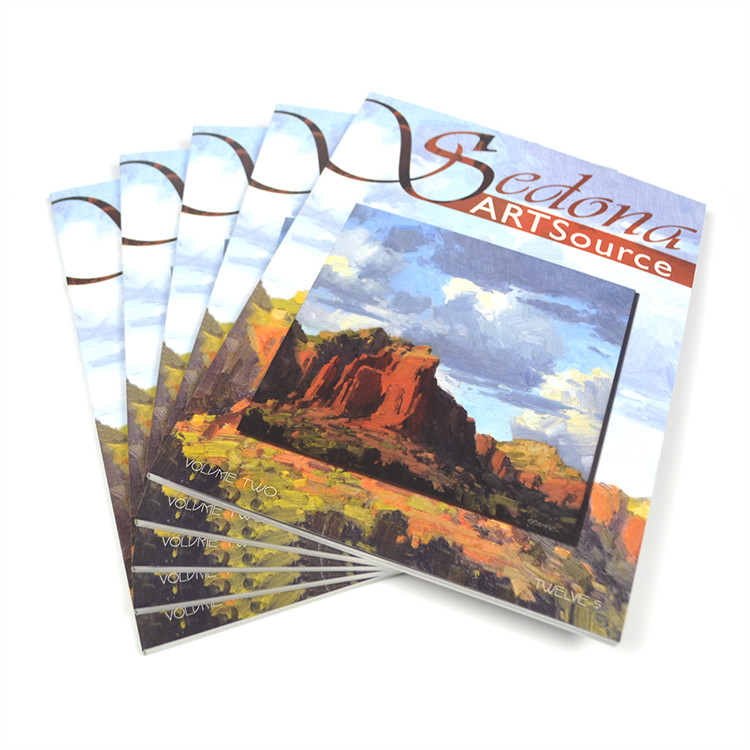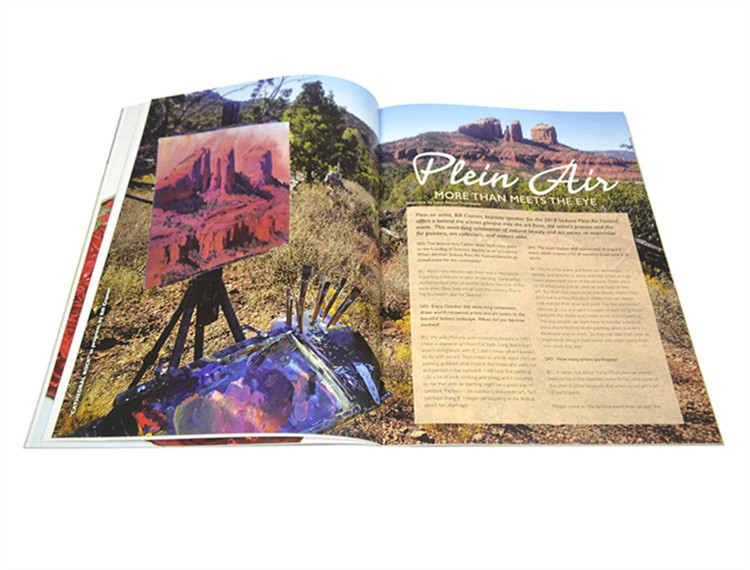
With the advent of digital technology, businesses are now able to print their own catalogues and magazines. Without relying on costly professional printing services. But with so many options available, it can be difficult to decide which printing method is best for your needs. In this blog post, we'll take a look at catalogue printing and magazine printing processes. As well as their respective advantages and how they fit into your budget. Ultimately, we'll help you determine which option is right for your business. Let's get started!
Overview of catalogue and magazine printing processes
Catalogue and magazine printing processes involve a variety of steps. They must be completed to produce a high-quality, professional-looking product. Understanding these processes is essential in deciding which type of printing is best suited for your needs.
1. Printing material
The basics of catalogue and magazine printing include the type of paper stock and ink used. Generally, catalogues are printed on heavy stock glossy paper. Magazines paper often with thin glossy paper.. Because it provides good contrast with the printed images and text. The most common page sizes for catalogues are 8.5” x 11” or 11” x 17”, although custom sizes can also be accommodated. Gloss and matte finishes can be applied to the printed page for added visual appeal.
2. Printing method
In terms of production, there are two primary methods: digital printing and offset printing. Digital printing uses toner-based technology to deliver a superior quality image. So the cost will lower than traditional offset printing methods. It is ideal for short runs or customized projects such as personalized catalogues or magazines. Offset printing employs plates to transfer the ink onto the substrate. Producing larger quantities much faster than digital presses. Also maintaining excellent print quality standards.
3. Binding options
Finally, there are several types of binding available when it comes to catalogues and magazines. Including perfect bound (also called soft cover), saddle stitch (also called staple binding), hard cover (case bound binding) and so on. Each type has its own advantages depending on what you need out of your finished product. Perfect bound is ideal if you want a flat spine finish with pages that lie flat when opened. Saddle stitch is ideal if you want to keep costs down. But still have a professional look with pages that hold together well without any extra support needed. Such as glue or threading wires through holes in the side of each page like coil binding requires.
Advantages of catalogue printing

Catalogue printing offers a range of advantages, both from a cost and quality perspective. Companies who looking for an affordable solution that can deliver high-quality results at speed. It is ideal for them to consider catalogue printing.
1. Cost saving
The primary benefit is cost savings. As digital printing technology continues to evolve. The costs associated with catalogue printing have decreased significantly in recent years. With digital printing, businesses can print smaller numbers of catalogues. It print at a lower cost than traditional offset printing methods used for large runs of magazines or other publications. This allows companies to save money on their investment in printed materials. While still producing high-quality prints. That will leave a lasting impression on customers and potential clients alike.
2. Speed and efficiency
Speed and efficiency are another benefit of catalogue printing over magazine production. Digital printers can produce catalogues in much shorter timelines than offset presses. Allowing companies to quickly produce short runs of catalogues. Without sacrificing quality or design elements. This helps businesses meet tight deadlines. Without incurring the high costs associated with magazine production. Furthermore, digital printers provide businesses with increased flexibility when it comes to customization. As they can readily adjust print settings for different products and services within one run of catalogues.
3. Better control over inventory and distribution
In addition to cost savings and quick turnaround times. Compared to magazine production processes. Catalogue printing also provides better control over inventory and distribution. With digital print technology, companies can easily control the amount they need printed at any given time. By adjusting the number of copies needed for each job individually instead of committing to large runs. That may require future storage space or expensive warehousing solutions. Furthermore, this greater control over inventory translates into better distribution capabilities as well. Since companies can ensure they always have enough printed material on hand for whatever needs arise.
Overall, when it comes to producing printed materials for businesses or individuals. Seeking an affordable alternative with fast turnarounds and high-quality results. There are many advantages associated with opting for catalogue printing instead of magazine production. Catalogue printing also with a lot of customization options available. When it comes time to invest in printed marketing materials or publications. The above benefits combined make it easier for businesses and individuals alike to decide which option is best suited for their needs.
Advantages of magazine printing

Magazine printing offers businesses a wide array of benefits. From the crisp, vivid imagery to the cost-effective production.
1. Provide higher image quality
Most notable is the higher image quality that magazines can provide. Due to their use of high-grade paper stock and ink. This creates a distinct look and feel that stands out with customers and prospects. Giving companies an edge when it comes to making a lasting impression.
2. Flexibility
The flexibility of magazine printing is another major advantage. They can be printed in various sizes, shapes, and formats. Allowing businesses to create publications to their exact specifications. Without sacrificing quality or budget. Furthermore, offset printing technology enables large volume runs with reduced costs per unit. Perfect binding or saddle stitching are great ways to create professional finishes at affordable prices.
3. Extra options
Besides these core features, magazines also offer extra options. Such as inserts and add-ons for increased interactivity with readers. Sticky notes or bookmarks provide further engagement opportunities for consumers. While promotional materials help drive sales numbers up. All this contributes towards creating long-term relationships between the business and its customers. Something that’s invaluable in today’s competitive marketplace.
Overall, when deciding which option best suits your business needs and budget constraints. Magazine printing offers several advantages over catalogue production which should be taken into account. High image quality paired with flexible design choices. Making magazine printing an ideal choice for those looking to create lasting impressions on their target audience.
How to choose between catalogue and magazine printing for your business
When it comes to deciding between catalogue and magazine printing for your business. There are a few key factors to consider.
1. Your purpose and target audience
Firstly, you should think about the purpose of your intended print pieces and who your target audience is. This will help you decide which type of printing is best suited for them. If your target audience is more interested in visuals than text. Then a glossy magazine may be the better choice. As its high-grade paper and ink will produce superior image quality. On the other hand, if your primary goal is to provide detailed information about products or services rather than visual appeal. Then a catalogue may be more appropriate.
2. Evaluate the cost of traditional versus digital printing
You should also evaluate the cost of traditional versus digital printing. As well as the timing of your needs and the environmental impact of each type of printing. Digital printing is often less expensive than offset printing. Because of its shorter setup times. But, it typically has lower print quality and doesn’t offer many customization options. Offset printing can produce higher-quality prints. But has longer setup times and requires larger minimum orders for it to be cost-effective. For businesses with tight timelines or small budgets, digital printing may be a better option.
3. Consider how much waste each type of printing generates
Finally, you should consider how much waste each type of printing generates. And whether you want to reduce its environmental impact by using recycled papers or eco-friendly inks. Both traditional offset printing and digital technology generate significant amounts of waste. But, both technologies offer various methods for reducing their environmental footprint. Such as using recycled papers and vegetable-based inks instead of petroleum-based ones.
When choosing between catalogue and magazine production for your business needs. By taking all these factors into account. You can make an informed decision that will best suit both your budget requirements and sustainability goals. Evaluating these key points before making any decisions. To ensure that you’re able to get the most out of whichever option you choose while staying within budget constraints.
Budget considerations in choosing between catalogue and magazine printing

When selecting between catalogue and magazine printing for a business. Budget considerations are of the utmost importance. Factors such as cost of materials, labor costs, turnaround time, shipping costs, and overhead expenses. These must all be taken into account before making a decision.
1. Cost of materials
The cost of materials is an integral factor to consider when deciding on which type of printed material to use. For example, if you are producing a magazine with multiple pages or high-quality images and illustrations. Then more paper stock may need to be purchased than would be necessary for a simple catalogue. Higher-grade paper stock will also increase the overall cost of production. But, compared to offset printing, which requires skilled workers. Digital printing technology couldresult in savings labour costs associated with production.
2. Turnaround time
Turnaround time should also be considered when making a choice between catalogues and magazines. Depending on the complexity of the job required. Magazines can take up to two weeks longer than catalogues due to their size and complexity. This could prove costly if businesses require their print piece quickly!
3. Shipping cost
Shipping costs can also vary significantly depending on w成hat type of printed material is chosen. As well as how many items need to be shipped out at once. Magazines typically require more packaging materials. Since they tend to weigh more than catalogues, due to their larger size. So this should definitely be taken into account when assessing budget considerations.
Finally, it's important for businesses and individuals to keep a close eye on the overhead costs associated with each type of printed material. Like storage fees or administrative fees, before deciding which one best suits their needs. Whether it’s catalogue or magazine printing, etc.. By doing so, they can ensure they make a choice that fits within their budget. Without sacrificing quality or value along the way!

